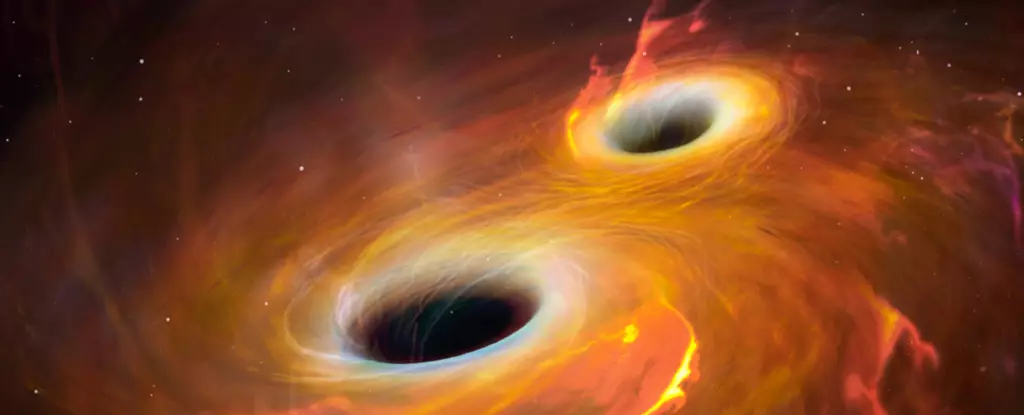At the heart of our galaxy, the Milky Way, lies a supermassive black hole, Sagittarius A* (Sgr A*), a cosmic entity that dominates its surroundings. Yet, this region is more than just the ominous presence of one black hole; it is a bustling hub filled with young stars, gas, dust, and the intriguing potential of stellar-mass black holes. This dynamic environment invites an exploration into the hidden complexities of our galactic core. However, the sheer density of interstellar gas and dust casts a formidable veil over direct observations in visible light, leading astronomers to turn to infrared and radio wavelengths for insights. Despite these advancements, the true population of stellar-mass black holes in this enigmatic region remains an elusive mystery, one that has sparked significant debate among astrophysicists.
The Challenge of Counting Black Holes
Traditional star formation models provide a conservative estimate of around 300 stellar-mass black holes lurking nearest to Sgr A*. Yet, as researchers delve into the chemical intricacies and stellar dynamics in the region, they are beginning to challenge this narrative. A newly published study in the journal Astronomy & Astrophysics presents a revolutionary model suggesting that the actual number of black holes could be staggering. The crux of this theory lies in the unique conditions surrounding Sgr A*, where a high concentration of gas and dust facilitates the rapid formation of massive stars—specifically O-type and B-type stars—that are short-lived yet explosive in nature.
Once these massive entities meet their inevitable end in supernova explosions, their cores collapse to form black holes, creating a feedback loop where the remnants fuel further star generation. This so-called “star grinder” model posits that the environment around Sgr A* becomes a veritable factory for black hole production—a process that not only amplifies the birth rate of these cosmic anomalies but also leads to an overcrowded stellar milieu where gravitational interactions become increasingly destructive.
The Consequences of Cosmic Crowding
The implications of such a high population of stellar-mass black holes in the vicinity of Sgr A* are significant. Should the “star grinder” model be validated, the center of our galaxy could potentially harbor millions to billions of black holes per cubic parsec. This staggering density hints at a chaotic orbital dance within which any star that strays too close would be subject to perilous encounters. Instead of a calm celestial tapestry, the galactic center could be envisioned as an active slaughterhouse for stars; think of a cosmic blender where gravitational forces rip apart stars, subsequently fueling a cycle of creation and destruction.
Moreover, the possibility of hypervelocity stars—celestial bodies traveling at velocities so fast they can escape the galaxy altogether—can be explained through this model. Close encounters with black holes could provide the necessary energy for these stars to obtain their remarkable speeds, bolstering the case for an incredibly dense black hole population surrounding Sgr A*.
The Methodology of Discovery
Proving the existence of a hidden army of black holes is no small feat, but the innovative approach adopted by researchers revolves around the statistical concept of collision time. By calculating the average period before a star collides with a black hole, researchers can draw meaningful conclusions based on the density of black holes in the region. Higher concentrations naturally result in shorter collision times, while larger stars face greater risks of collision.
Through rigorous analysis comparing statistical models with observable data, the researchers arrived at a staggering estimate—approximately 100 million black holes per cubic parsec. This aligns with the observations of reduced numbers of O-type stars in the central region, suggesting that these massive stars may rarely linger long enough to avoid the grinding effects of black hole interactions.
The Road Ahead in Galactic Research
While the star grinder model presents a provocative narrative for the dynamics of our galaxy’s center, the scientific community remains vigilant. While detailed computational simulations and further observations will be crucial in validating these findings, this new perspective on star formation offers a transformative understanding of black hole proliferation. With advancements in technology allowing astronomers to peer deeper into the obscured regions of the universe, the groundwork for a more granular understanding of our galactic environment is being laid.
Not only does this research engender excitement in the pursuit of cosmic knowledge, but it also underlines the intricate interdependence of stellar life cycles and the very fabric of our universe. As scientists grapple with these cosmic complexities, one can only wonder what further revelations and mysteries remain hidden in the heart of our galaxy.


Leave a Reply